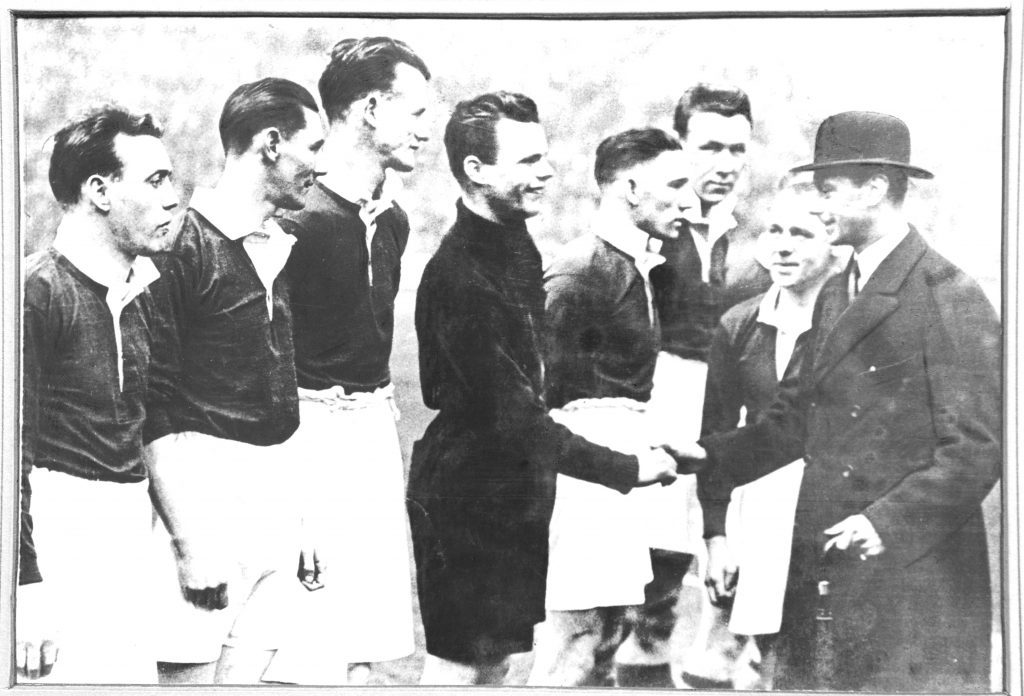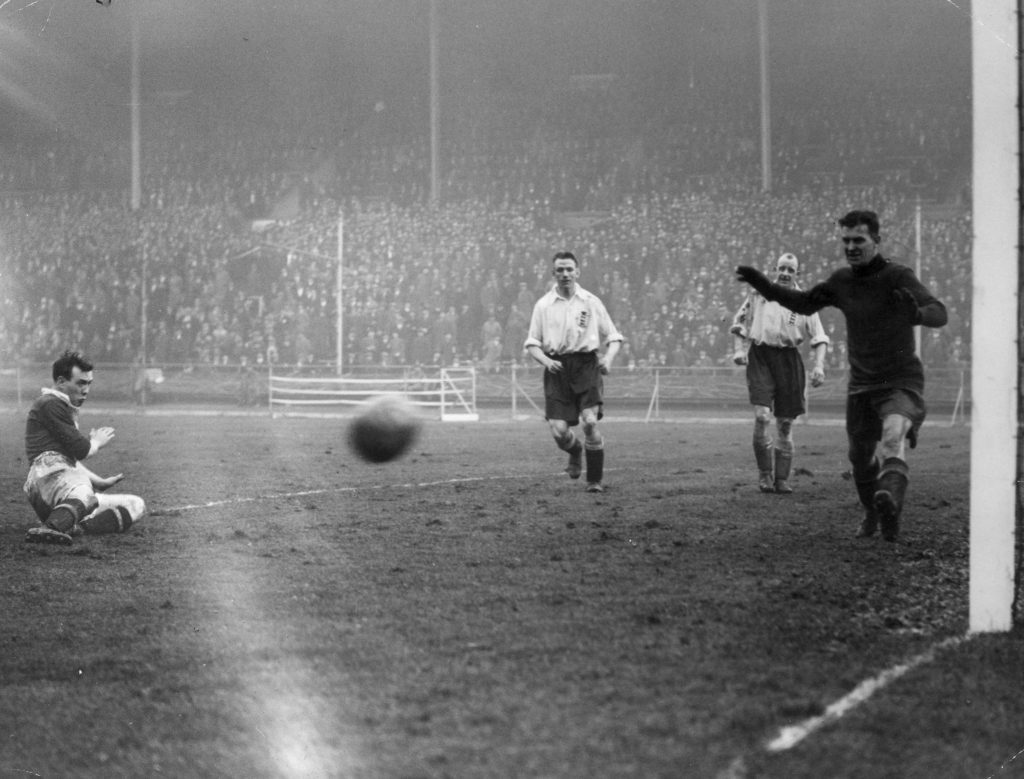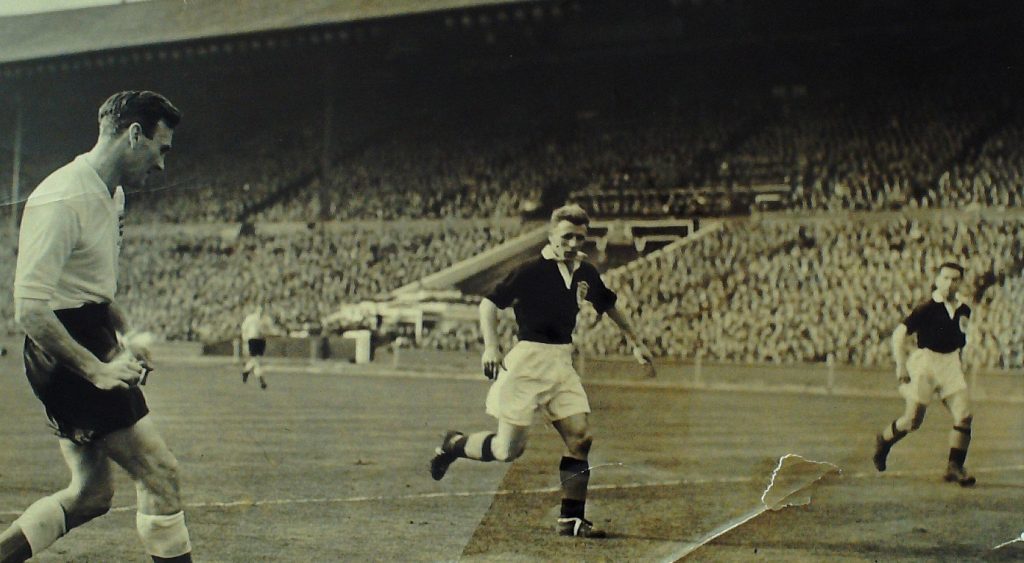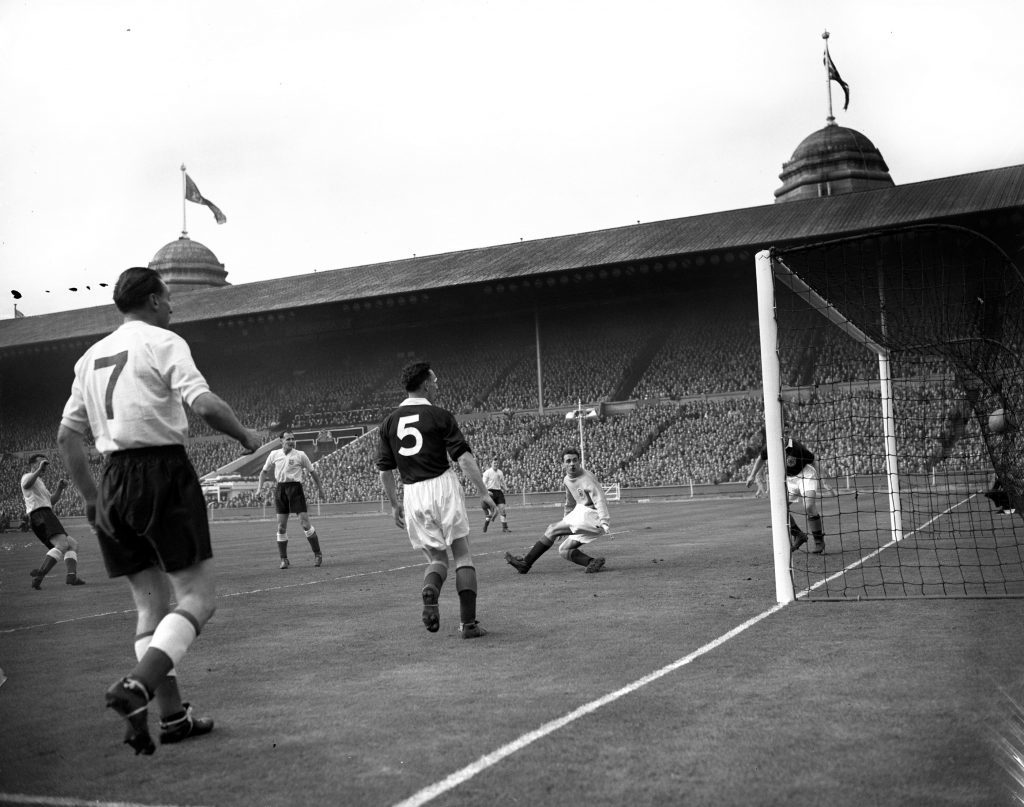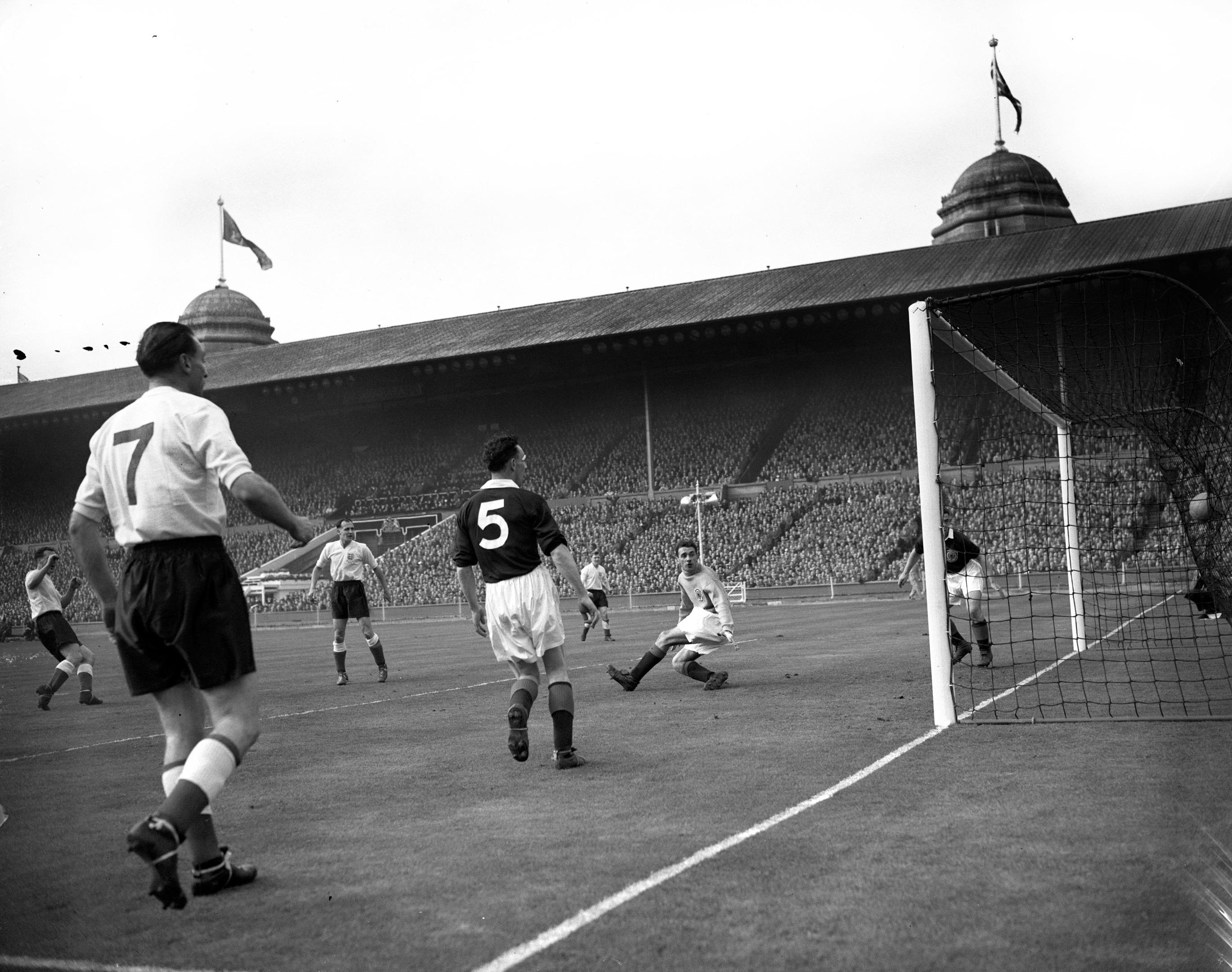

Wizard made ball disappear
SCOTLAND had been dragged around England for over 50 years before Wembley became its second home in international football.
London’s Kennington Oval (predominantly a cricket ground), the capital’s Richmond Athletic Ground – better known for rugby – Crystal Palace and Stamford Bridge, Bramall Lane and Hillsborough in Sheffield, Blackburn’s Leamington Road and Ewood Park, Goodison Park in Liverpool, St James’ Park in Newcastle and Birmingham’s Villa Park all staged clashes between the Auld Enemies before Wembley was built.
And even after Scotland’s first visit there in 1924, a 1-1 draw, Wembley’s staging of the British Empire Exhibition in 1926 saw the fixture moved to Old Trafford before it was staged in the shadow of the Twin Towers every two years.
Given the lack of manners normally expected of guests shown by the Scots in 1928, it’s a miracle we were ever invited back.
Down through the years, Scotland’s fortunes at Wembley have been many and varied
But never were the English given such a good, old-fashioned doing as the 5-1 win that saw the team christened the Wembley Wizards.
Things hadn’t started so brightly.
It was the days before Scotland had a manager, current form was beamed lived into living rooms by Sky and teams were announced on Twitter.
So the SFA’s Selection Committee arranged a trial game between Home Scots and Anglo Scots at Firhill, with a 4.30 pm kick-off on a Thursday.
After a 1-1 draw, the team was announced from the steps of the SFA’s headquarters in Glasgow to a gathered crowd.
When they heard the likes of Jimmy McGrory of Celtic and Rangers’ Bob McPhail had been omitted, and that the team for Wembley included eight Anglos, there was uproar.
Their tune soon changed just over a fortnight later, however, when the match kicked off.
Alex Jackson put the visitors in front after just three minutes, and he remains the last Scot to score a hat-trick against England.
An Alex James’ double added to the rout, and but for Bob Kelly’s last-minute goal for the hosts, the drubbing would have been even more of a slaughter.
England forward Dixie Dean was in the midst of a season which would see him score a record 60 goals for Everton.
But on his Scotland debut, Tom Bradshaw – 6ft 1in in his stocking soles and nicknamed Tiny – never gave him a kick. He would also never kick a ball for Scotland again.
Fifty years on from that famous day, The Sunday Post reunited Tiny with Jack Harkness. By then, the Scotland keeper had become our chief football writer.
Many a tale was exchanged, with Tiny revealing he shared a room with Hughie Gallacher that weekend, and that the Newcastle United striker had an impromptu “party” with a mate from Bellshill on the eve of the game.
This was despite instructions to the entire team from captain, Jimmy McMullan, to: “Go to your bed, put your head on your pillow and pray for rain.”
It was thought heavy conditions would suit Scotland’s diminutive forward line, where Jackson was tallest at just 5ft 7in, so prayers were answered.
Also present at their reunion was the match ball. These days it resides in the Scottish Football Museum at Hampden, and Jack told how he got his hands on it for keeps.
“If it hadn’t been for the ref, Willie Bell from Hamilton, giving England a goal for nothing in injury time, that ball might have been lost for ever,” Jack recalled.
“Bob Kelly took a free-kick from the edge of the box, it hit the underside of the bar and I spun round to grab it. I didn’t think it was over the line, but the ref blew once to signal he’d awarded a goal, then another blast for time up.
“When I saw the Scottish fans jumping over the boundary wall – we had a Tartan Army in those days, too – I hid the ball up my jersey and made a beeline for the dressing room.”
As reward for possibly the greatest Scotland win of all time, each player received the princely sum of £8 – except Harkness.
A Queen’s Park player, and the only amateur in the team, he was given a gold medal instead.
For all of them, their principle reward was immortality in the folklore of Scottish football.
By David Walker
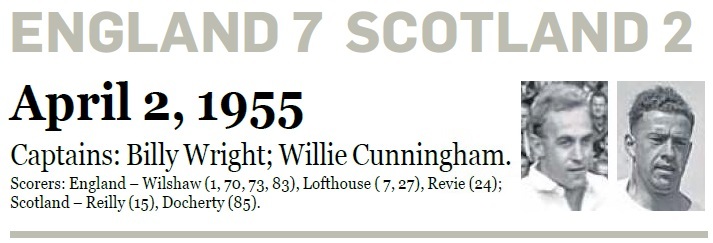
Matthews sends Auld Enemy into seventh heaven
ONE man made all the difference when Scotland were thrashed 7-2 at Wembley in 1955.
It sounds unbelievable, but a 40-year-old winger tore the visitors apart and inspired England to what was a record victory at the time.
Stanley Matthews produced one of the greatest performances of his life.
It was a hugely significant game for several of the England players.
Manchester United’ s Duncan Edwards was making his international debut, aged 18, captain Billy Wright was picking up his 50th cap and his Wolves’ team-mate Dennis Wilshaw scored four goals.
Matthews didn’t score but turned on a brand of fantasy football that had commentators labelling him as the greatest player in the history of the game.
And yet it might have been very different if Scotland had made a better start.
England scored within 60 seconds, got a second in the 7th minute and were 3-0 ahead before half-an hour had been played.
Scotland inside-forward Ian McMillan sent a shot over the bar just after kick-off and could then only watch as keeper Fred Martin fumbled a cross that led to the hosts’ opening goal.
McMillan, who later played for Rangers, was a part-time player with Airdrie at the time. The early stages of the match, he believes, were key to England achieving that Wembley massacre.
He said: “If you make as poor a start as we did that day, then you’re really up against it.
“We were dead and buried when Don Revie scored a third goal for England in 24 minutes.
“It’s always hard to watch the opposition being so dominant but Stanley Matthews was one player you couldn’t help but admire.
“He was marvellous dribbler of the ball and gave our left-back, Harry Haddock, a nightmare of an afternoon.
“People used to ask me who was the better player— Stanley Matthews or Tom Finney?
“My view was that Finney was more dangerous because he was the better finisher.
“But that afternoon it all clicked for Matthews and he found players in Wilshaw, Revie and Nat Lofthouse who were able to put the ball in the net.”
The aftermath of a heavy defeat is never easy for the players involved.
McMillan admits it was hard to be part of an international team thumped by their greatest rivals, but remains remarkably philosophical about the fourth of his six caps.
He went on: “One of my greatest ambitions was to play for my Scotland.
“There was no greater accolade for a player than to be picked for his country.
“Lining up in the dark blue shirt while the national anthem played was quite an overwhelming experience.
“Of course, we were crucified for our performance in the match but I always accepted there were ups and downs in football.
“It hadn’t been my day and I could only return to my club and hope for better times ahead.
“I went to Wembley several times to watch games between England and Scotland.
“But the best view I ever had was that afternoon in 1955.”
By Brian Fowlie
The 1960s >

Enjoy the convenience of having The Sunday Post delivered as a digital ePaper straight to your smartphone, tablet or computer.
Subscribe for only £5.49 a month and enjoy all the benefits of the printed paper as a digital replica.
Subscribe